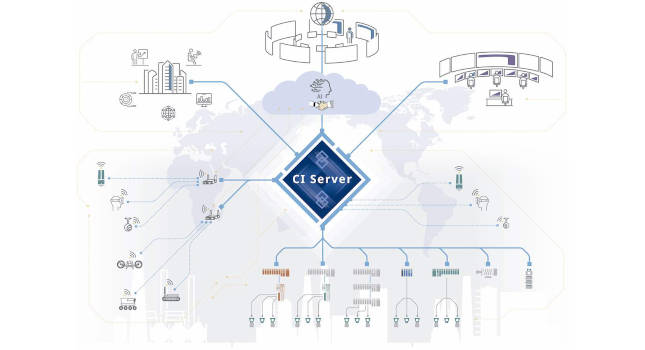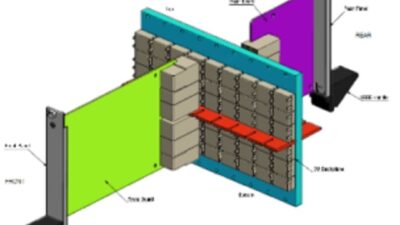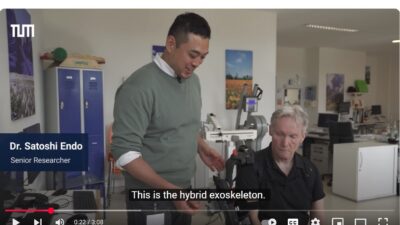End users have been vocal about wanting open systems, and automation vendors are responding by delivering systems compliant with international standards.

Japan’s Ministry of Economy, Trade, and Industry recently released a digital transformation (DX) report titled: “Overcoming the IT system ‘2025 Cliff’ and major development on the DX,” which identified legacy information technology (IT) systems as a major obstacle hindering DX. Legacy system obstacles are not limited to IT systems; legacy automation control and monitoring systems also create obstacles.
The report anticipated various problems such as black boxing due to technological obsolescence, the retirement of system designers, and further restrictions with the introduction of new technologies. [Applying a ‘black box’ with proprietary hardware and software inside may temporarily resolve a few issues but can create a tangle of incompatible technologies.] Once automation systems are introduced, they are expected to remain in continuous service for 20 or 30 years, which makes upgrades or replacements difficult.
Given these circumstances, the task of an automation system or a distributed control system (DCS) vendor can be thought of as offering the latest technology without disturbing operations, requiring more open systems. In the technological world, open implies the standardization of specifications and design, and the resulting elimination of custom integration, by using standardized open interfaces.
From closed to partially open automation
DCS vendors have often met end user expectations by integrating proprietary products into complete systems. Vendors stressed differentiating characteristics while developing products for consistent and stable performance. All the while, these systems gradually conformed with de facto and international standards, often by using existing commercial off-the-shelf technology to evolve their systems to meet market demands. Up to now, this evolution progressed not only through proprietary development, but also by incorporating general-purpose products available in the market.
To gain advantage, vendors participated in standard development and acquired other companies. In the name of emphasizing benefits to end users, a power struggle emerged to strengthen market position and product portfolios. Concurrently, some functions became standardized, making it possible to connect field devices with various systems, which afforded some freedom to end users by reducing dependence on one vendor. OPC Classic (DA, A&E, HDA), Foundation Fieldbus, ISA100 Wireless, and other international standard communication protocols became driving forces for adding value to systems.
As a result, many DCS vendors now view their roles as system integrators providing services to end user companies, rather than as manufacturers of proprietary product lines.
Standards enable open automation systems
Partially-open systems played a role in meeting end user needs, but as time passed, they were replaced by newer systems, which were often updated to stay current. This evolution was necessary to support end users, and to adopt technologies such as general-purpose operating systems, Ethernet communication, virtualization, and other advancements (Figure 1).
However, the market has changed and this arrangement has limits. Vendors may need to shift from integrating their systems to developing the end user’s business while cooperating with other vendor companies, some of which may be direct competitors.
To cope with this paradigm shift, a network of companies has emerged to form a business ecosystem. Representative organizations that consider technological standards and industry development include NAMUR (a German process industry automation system user group) and the Open Process Automation Forum (OPAF), the group that develops open process automation (O-PAS) systems.
NAMUR open architecture (NOA) and OPAF devote discussions to systems that are vendor-neutral, meaning they can accommodate devices and functions with the latest technology at any time, with compliant systems continuing to use existing software applications as assets in the future.
In the case of NOA, an independent domain called monitoring and optimization is prepared separately from existing systems to directly acquire data from new sensors (such as vibration, audio, corrosion, odor), robots, drones, and other equipment. Further, the communication standard OPC UA from OPC Foundation is used to acquire data from existing systems for advanced control, analysis, and diagnosis. In terms of security measures, this approach has a high affinity with the zone design recommended by IEC62443 (control system security), easing system design and maintenance. OPAF promotes many of the same ideas by advocating for independence from existing systems.
The core system networks developed by vendors are critical as they are used at many manufacturing sites today and are trusted in terms of safety and stability. However, when it comes to introducing new technology essential for system growth, these networks can become barriers, and going forward they may hinder the implementation of solutions beneficial to end users. Further, continuous measures are necessary to address potential future security problems, an area where the original specifications of these networks may present limits.
OPC UA and Profinet are raising their presence as core system networks and garnering attention as capable networks conforming to international standards. By leaving conventional thought behind, DCS vendors can transition from proprietary system development to using commercially available software and hardware. As a result, companies can cooperate on solving end user issues, while leveraging their internal strengths.
Ongoing OPAF discussions about architecture requirements involve interoperability, modularity, standards conformance, security standards compliance, and scalability. All of these attributes are essential for openness and require continuous effort. Further, they suggest it will be crucial for companies acting in various roles to build relationships. These attributes stress the need for a business ecosystem that fosters cooperation among end users, system integrators, vendors, and service providers. In the closed system world, it was enough to look after one’s own products, but an open world demands integration, regardless of manufacturer.
Openness challenges and solutions
Openness is appealing to end users, and it is natural to think it will be possible to build systems with flexibility to allow the market and users to determine how they will develop over time. For DCS vendors, it will be important to not only bring products to market that meet standards, but also to also decide how to build and be involved in the business ecosystem. It also will be important to use application software running on existing systems, and vendors should consider these issues as they move forward with system development. In the future, support for international standards, security measures, and system interoperability will be required.
From a system integration standpoint, it is necessary to conform to international standards and to become certified through a third-party certification body. Companies should ensure their system products comply with IEC62443 (control system security) and IEC62541 (OPC UA), and these activities will continue in the future.
Security measures
For security measures, manufacturers are required to follow the regulations in IEC62443, and specifically to receive ISASecure SDLA and CSA certification. IEC62541 (OPC UA) also mentions security measures, mainly focusing on communication. It addresses authentication and encryption for data integrity, confidentiality, and availability to prevent information leaks—even when spoofing, falsification, or eavesdropping are detected.
System interoperability, automation information models
Regarding system interoperability, NOA and OPA advocate standardization of information models and advancing the NAMUR Open Architecture Information Model and the O-PAS information model by utilizing the OPC UA Meta Model and Built-In Information Model, and IEC 62814 (Automation ML), along with other items specified in IEC62541.
With OPC UA and the AutomationML standard, it may be possible to unify different rules and data structures that express the same information in varying formats. At the moment, AutomationML is handled as part of the OPC UA companion specification information model, so supporting the OPC UA information model is a priority (Figure 3).
Support for open standards
The openness that NOA and OPAF are advocating aims to incorporate cutting-edge technology without disturbing existing systems. A collaborative information server (CI server) can provide an open system option for users (Figure 4).
The concepts behind the CI Server are horizontal and vertical integration, wide area integration, labor-saving operations, and innovative operation. These represent an integrated operation function combining all the automation components, systems, and devices at sites and plants—making it easy to manage acquired data and resulting information.
As its primary communication protocols, a CI Server supports the industrial communication standards OPC UA (client/server and publisher/subscriber functions), message queuing telemetry transport (MQTT), and open database connectivity. MQTT is an optimal communication standard for Internet of Things (IoT) implementations where a wide variety of data and information is exchanged among devices.
Conventional automation systems mainly targeted process data (temperature, pressure, flow, level, etc.). However, it has become possible to acquire data from devices and systems that control a variety of equipment and installations, providing the capability to centrally manage all plant data and information.
By following OPC UA’s information model standard specifications, the acquired data no longer depends on specific systems, and the OPC UA companion specification information mode can be used to create added-value information.
Future developments in open automation
As openness accelerates through the adoption of IT advancements, the expectations for automation systems are broadening from safety and stability to include increased profitability through efficient operation. This means responding to rapid market changes, optimizing costs, increasing quality and operational efficiency, and making other improvements. To achieve these goals, it is important to serve up the data distributed throughout the plant as relevant information to the appropriate personnel.
A CI server digitizes the associations among all types of data. By creating a global information model for plant operations and their associated data, it can provide digitized and digital twin environments (Figure 5).
In digitized plants, operations are supported by automating data cycles, whereby on-site data is collected and stored, with the resulting big data analyzed, modeled, and used to improve operations and business decision-making. A CI server deployment eases the burden on plant personnel, who would otherwise have to deploy customized solutions or resort to manual measures.
These types of products work hand in hand with open systems to provide the solutions increasingly demanded by end users.
Masaru Yamazaki, system business and products planning manager, Yokogawa Electric Corp.; Wataru Nakagawa, system product content marketing manager, Yokogawa Electric Corp. Edited by Chris Vavra, web content manager, Control Engineering, CFE Media and Technology, [email protected].
MORE ANSWERS
Keywords: system integration, industrial networking standards
Control systems have relied more on open technology as standards often change, and everything starts coalescing.
Many current standards are vendor-neutral, which allows users more freedom with their industrial networks.
A collaborative information server (CI server) provides an open system option for users and ease the burden on plant personnel.
CONSIDER THIS
What challenges or problems have come up when dealing with industrial networking protocols?
ONLINE extra
https://www.yokogawa.com/solutions/products-platforms/control-system/ciserver/
References
- “Overcoming the IT system ‘2025 Cliff’ and major development on the DX,” March 2019, Ministry of Economy, Trade and Industry: https://www.meti.go.jp/english/press/2018/0907_004.html
- NAMUR Open Architecture NOA Concept NE 175, July 2020: https://www.namur.net/en/publications/news-archive/ne-175-is-newly-published.html
- The Open Process Automation Business Guide, January 2018: https://publications.opengroup.org/g182



